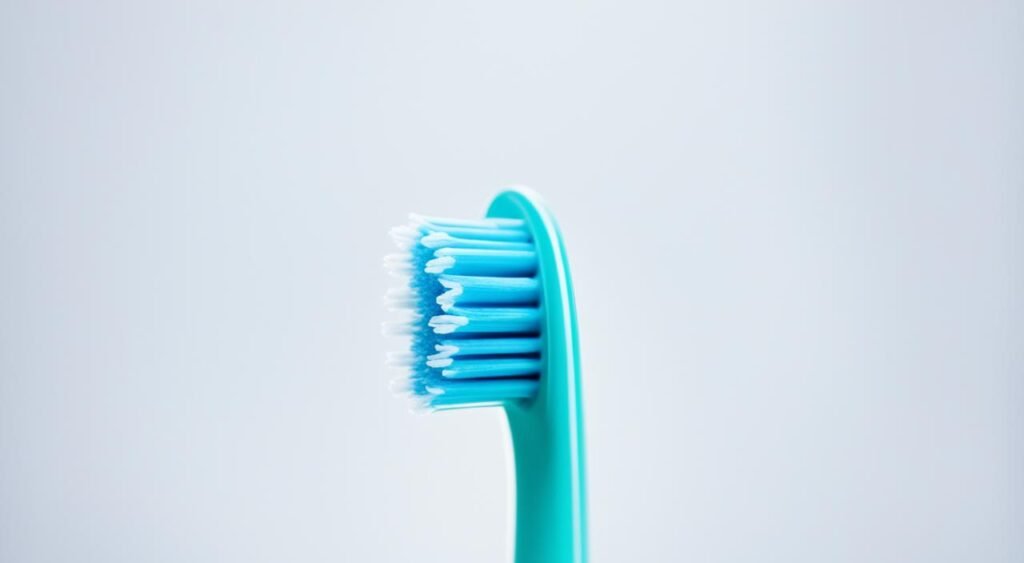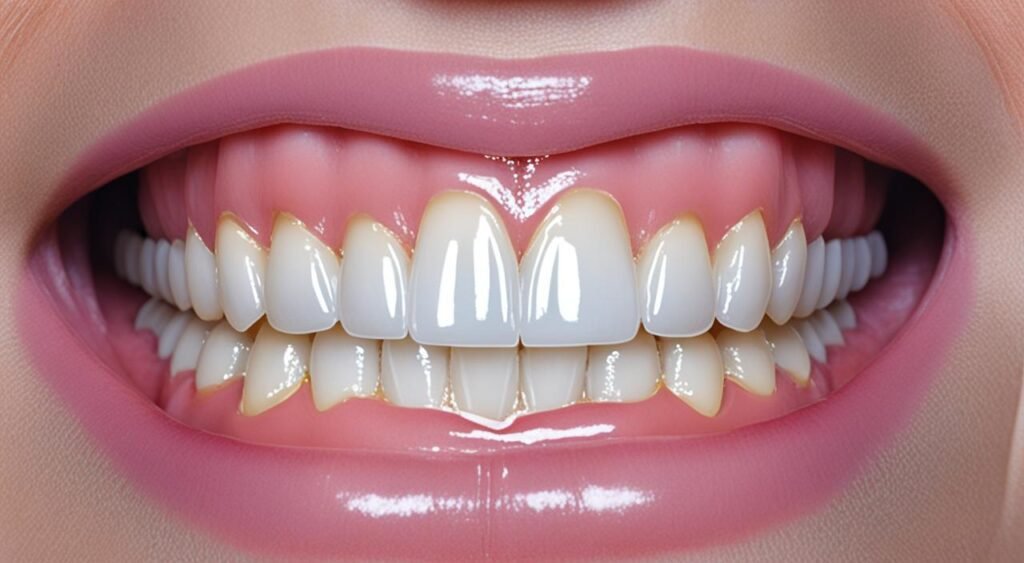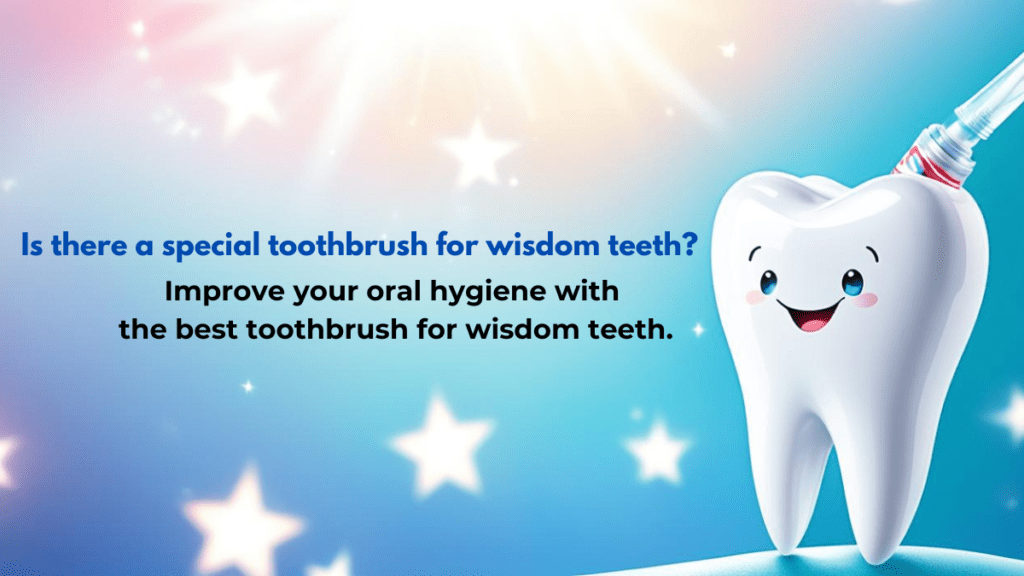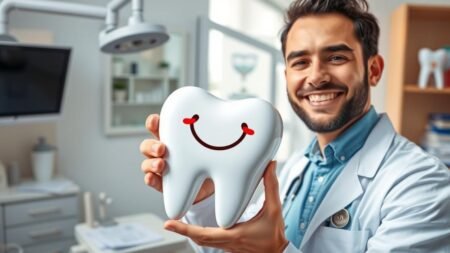Wisdom teeth start to show up when you’re between 16 and 24 years old. They are at the very back of your mouth, making cleaning a bit tricky. Having the right toothbrush for wisdom teeth can make all the difference for comfy cleaning.
Finding a toothbrush seems easy until you face wisdom teeth. They attract plaque, which makes brushing challenging. Experts recommend a soft-bristled toothbrush. It should be gentle on gums and enamel but still get into tight spaces. Picking a gentle care pick means you don’t trade off cleanliness for comfort.
It doesn’t matter if you like electric or manual toothbrushes. The important thing is to keep up with cleaning. Experts say a soft-bristled toothbrush is essential. It protects your gums and enamel while cleaning well.
Read our article to learn the best ways to care for your wisdom teeth. Let the ideal toothbrush be the hero in your daily fight for oral health. Learn how to keep your mouth healthy, embracing the challenges wisdom teeth can bring.
- Understanding the Special Needs of Wisdom Teeth
- Expert Recommendations for Wisdom Teeth Oral Hygiene
- Top Features to Look for in a Toothbrush for Wisdom Teeth
- Manual vs. Electric Toothbrushes for Wisdom Teeth Care
- Evaluating the Softest Toothbrush Options for Post-Surgery and Sensitive Gums
- The Importance of Regular Replacement of Toothbrush Heads
Understanding the Special Needs of Wisdom Teeth
Wisdom teeth need special care. They are the last molars in the mouth. They are hard to clean and need unique tools and techniques.
Challenges in Accessing Wisdom Teeth for Cleaning
Wisdom teeth can get a lot of plaque and tartar. This is because they’re hard to reach. People with disabilities might find it tough to clean them every day. Also, they might not tell you when their teeth hurt.
Role of Toothbrush Bristle Softness and Head Size
The softness of a toothbrush’s bristles and the size of its head matter a lot. They make it easier to clean wisdom teeth. For those with special needs, the right toothbrush is even more important. Bad brushing can lead to gum disease or even tooth loss.

Why Wisdom Teeth Require Gentle Oral Care
Wisdom teeth need to be treated gently. This is to keep the gums healthy and reduce pain. For people with special needs, dental care like scaling or sedation requires extra care. This helps to lessen their anxiety about dental visits.
Dentists, like the team at In Motion Dentists in the Inland Empire, know how to give special care. They adapt their methods for people with different disabilities. This ensures everyone gets the dental care they need.
Expert Recommendations for Wisdom Teeth Oral Hygiene
Wisdom teeth usually come in between 17 to 21 years old. This event adds new duties to your oral care routine. Dental experts say not everyone gets wisdom teeth. And not all need to be taken out. But people who have them should follow certain tips to keep a healthy smile. We’ve collected advice from veteran dentists to guide you on wisdom teeth oral hygiene.
Remember, proper oral hygiene is paramount after the extraction of wisdom teeth to prevent complications such as dry socket, a painful condition that can last about a week following surgery.
- Maintain a rigorous brushing routine recommended by dentists—2 minutes, twice a day—to ensure the cleanliness of your teeth and the health of your gums.
- Post-extraction, it’s imperative not to brush the healing area directly until it has completely recovered to avoid disrupting the healing process.
- Switch to a liquid and soft food diet for a few days post-surgery to ease discomfort and support healing.
- After the procedure, manage pain, should it arise, with the appropriate use of over-the-counter painkillers or prescription medications following your dentist’s guidance.
Wisdom teeth may cause crowding and other dental problems. For good wisdom teeth oral hygiene, dentists often suggest watching these teeth closely. Sometimes, they need to be removed if they cause pain or don’t fit in your mouth right.
Per the CDC, changing your toothbrush every 3 to 4 months is crucial. Or after getting over a sickness. This stops germs from building up. These germs could move to your mouth and hurt your oral health.
There’s a lot of expert advice out there. It helps you create a good plan for wisdom teeth oral hygiene. Such a plan keeps your mouth healthy and makes the process comfortable.
| Age of Eruption | Common Issues | Expert Care Tips |
|---|---|---|
| 17-25 years | Crowding, pain, decay | Brush gently, avoid the extraction site, soft diet |
| Post-extraction | Dry socket, quick pain subsidence | Soft brushes, pain management techniques |
| Overall Care | Impact and crowding | Regular dental check-ups, monitor for extraction need |
| Toothbrush Maintenance | Bacterial build-up | Replace toothbrush every 3-4 months |
Keep these tips in mind for your wisdom teeth care. If you’re not sure how to handle your wisdom teeth, always ask a dental expert. Being knowledgeable and careful with wisdom teeth hygiene greatly benefits your dental health.
Top Features to Look for in a Toothbrush for Wisdom Teeth
Looking after your wisdom teeth is key to good oral health. Knowing the right toothbrush features can guide you. The path to wisdom teeth care has its hurdles, especially because of where these teeth are. But, the correct tools lead to victory.

GUM End Tuft Toothbrush – Extra Small Head For Hard-to-Reach Areas – Implants, Back Teeth, and Wisdom Teeth – Soft Dental Brush for Adults
This ultra-compact toothbrush comes with soft bristles that deliver a gentle clean with less pressure that’s perfect for adults with sensitive teeth and gums.
Small Brush Heads: Accessing Hard-to-Reach Areas
Consider small brush heads as a crucial feature. Wisdom teeth sit way back in your mouth, hard to get to. Small brush heads help you reach these spots easily. They ensure that no plaque stays near your wisdom teeth.
Pressure Sensors: Preventing Gum Damage
It’s easy to brush too hard, which may harm your gums. That’s where pressure sensors help. They warn you if you’re brushing too vigorously. This helps protect your gums and wisdom teeth.
Timers and Quadrant Alerts: Ensuring Thorough Cleaning
Timers and quadrant alerts are tech tools for a better clean. They divide your mouth into parts and ensure you brush long enough in each. They make sure every tooth gets cleaned well, even the wisdom teeth.
To sum up, having a small brush head, pressure sensors, and timers makes for an excellent toothbrush. These toothbrush features will keep your wisdom teeth in great shape. Remember them and your wisdom teeth will be grateful.
| Feature | Description | Benefit |
|---|---|---|
| Small Brush Heads | Compact head size designed to clean hard-to-reach areas. | Effectively cleans wisdom teeth without causing discomfort. |
| Pressure Sensors | Alert system that signals when too much force is applied while brushing. | Helps protect gums from being damaged, promoting healthier oral practices. |
| Timers & Quadrant Alerts | Built-in timer that encourages even cleaning time across all mouth quadrants. | Ensures a consistent, thorough clean across all teeth, including wisdom teeth. |
Manual vs. Electric Toothbrushes for Wisdom Teeth Care
Choosing the right toothbrush, especially for wisdom teeth, can be tricky. Manual and electric toothbrushes each have their pros and cons. Knowing about their brushing techniques will help you decide.
Pros and Cons of Electric Toothbrushes
Electric toothbrushes stand out for their ease and high-tech features. They clean with up to 30,000 strokes per minute. This makes them great for reaching behind your wisdom teeth.
People using them tend to see healthier gums and less decay. Studies show they cause less gum recession and tooth decay. And with various modes, they meet different dental needs.
But, they’re more expensive than manual ones. They’re bulkier too, which makes travel hard. Also, dealing with charging or batteries is a hassle.
Manual Toothbrush Adaptability and Technique
Manual toothbrushes are praised for their simplicity and flexibility. They let you control how you brush, which is crucial for cleaning wisdom teeth properly. They’re cheap and easy to take with you.
Yet, getting them to work well relies on your brushing skills. They lack timers and pressure sensors. These are helpful for people who might brush too hard.
| Aspect | Electric Toothbrushes | Manual Toothbrushes |
|---|---|---|
| Cost | Generally higher, ranging from 450-4000 rupees for starter kits | More affordable with prices between 20-150 rupees |
| Effectiveness | 22% less gum recession and 18% less tooth decay over an 11-year period | Effective with proper technique |
| Features | Pressure sensors, multiple cleaning modes, timers | Color-coded bristles to indicate when to replace |
| Accessibility | Especially beneficial for cleaning around wisdom teeth and for people with limited mobility | Requires adept brushing technique for hard-to-reach areas |
| User-Friendly | Easy to use, may require charging or batteries | Simple use, no extra accessories |
| Portability | Bulkier and less travel-friendly | Compact and ideal for travel |
In the end, the choice between manual and electric toothbrushes depends on what you prefer. Think about your lifestyle and dental needs. This way, you can take good care of your teeth.
Evaluating the Softest Toothbrush Options for Post-Surgery and Sensitive Gums
If you’ve had oral surgery or suffer from sensitive gums, choosing the softest toothbrush options is key. This is vital for healing and maintaining oral health. Soft nylon bristles that are rounded at the ends help. They’re recommended by dentists and crucial for avoiding irritation while ensuring a gentle cleanse for sensitive gums.
After surgery, your mouth needs a toothbrush that won’t hurt or harm. If you carry a toothbrush when out—like at work—you’re 65% more likely to use it. Remember to keep your toothbrush germ-free.
- Opt for toothbrushes with soft bristles for a gentle yet effective clean.
- Choose a smaller toothbrush head to reach healing or tender areas easily.
- Electric toothbrushes with oscillating-rotating heads are great for removing plaque gently.
- Make sure the toothbrush has the ADA seal, proving it meets high standards.
- Change your toothbrush or head every three to four months, or if the bristles fray.
Finding the softest toothbrush options should be simple. By following these tips, you can take care of your sensitive gums. This ensures a gentle clean, helps in recovery, and promotes better oral care after surgery.

The Importance of Regular Replacement of Toothbrush Heads
One key habit for good oral health is the regular replacement of toothbrush heads. Both the American Dental Association (ADA) and the Centers for Disease Control and Prevention (CDC) stress its importance. They advise getting a new toothbrush every three to four months. This helps ensure your dental care is effective. Over time, even the best toothbrushes lose their effectiveness due to worn bristles.
But why replace your toothbrush so often? It’s all about cleaning power and staying germ-free. Research shows a toothbrush’s plaque-removing ability drops after 40 days because of bristle wear. Old bristles can’t clean well, which means more plaque and bigger oral health risks. They also soak up bacteria, which can cause infections if not replaced. For kids, who may be harder on their brushes, it’s even more critical to keep an eye on and replace their toothbrushes regularly.
Don’t forget to take care of your toothbrush between changes. Rinse it well after each use, let it dry standing up, and never share it. This keeps germs at bay. If you use an electric toothbrush, the rule is the same: replace the head every 12 weeks, or sooner if the bristles are worn. Good dental habits are key to your overall health. A simple step like toothbrush head replacement is vital for a healthy smile.
FAQ
What is the best toothbrush for wisdom teeth?
Look for a toothbrush with soft bristles. It should have a small head to reach back areas easily.
Why do wisdom teeth require specific oral care?
Wisdom teeth are hard to reach and clean. If they are not cared for, you could get gum disease or tooth decay.
What are the challenges in accessing wisdom teeth for cleaning?
Wisdom teeth are in the back of the mouth and may not come in fully. This makes them hard to clean. The right toothbrush and technique can help a lot.
Is toothbrush bristle softness and head size important for wisdom teeth care?
Yes, they are very important. Soft bristles are gentle on your gums. A small brush head can easily reach your wisdom teeth.
What are some expert recommendations for maintaining proper oral hygiene for wisdom teeth?
Experts say to brush twice a day with a soft, small-headed toothbrush. They also recommend flossing daily and regular dentist visits.
What are the top features to look for in a toothbrush for wisdom teeth?
For wisdom teeth, you need a toothbrush with a small head. It should have pressure sensors and timers for a good clean.
What are the pros and cons of electric toothbrushes for wisdom teeth care?
Electric toothbrushes are good for cleaning wisdom teeth with their special movements. But, they can cost more and might take time to get used to.
How often should toothbrush heads be replaced to maintain optimal oral hygiene?
Replace toothbrush heads every three to four months. Do it sooner if the bristles are frayed. This keeps the brush effective and germ-free.








